

Solutions for Better Living | Cooking Fourth Edition
Revised
Healthy cooking and eating is important to everyone's health and wellbeing. This magazine covers various health and nutrition topics with an emphasis on healthy cooking. Topics include food safety, savvy shopping and cooking with kids. This magazine offers fun, colorful and easy-to-read stories, tips and tricks on stretching your food budget, selecting and preparing in-season fruits and vegetables, how to avoid foodborne illnesses and much more.
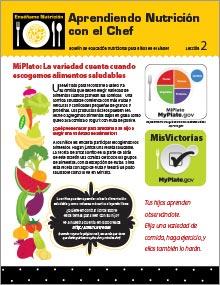
Aprendiendo Nutrición con el Chef — Boletín de educación nutricional para niños en el kínder — Lección 2 (Paquete de 25)
Revised $12
Nota del editor
Esta publicación fue creada para que usted imprima y distribuya de manera gratuita. Si va a duplicar o copiar esta publicación, por favor, complete el formulario de permiso que se encuentra al lado izquierdo de esta página. Si va a compartir o publicar, por favor utilice el enlace directo a esta página.

WorkWell Missouri Toolkit
Revised
Employers interested in starting, improving or maintaining a staff wellness program: Learn to assess the workplace, identify program types to implement, implement wellness programming and determine effectiveness in this step-by-step MU Extension guide.
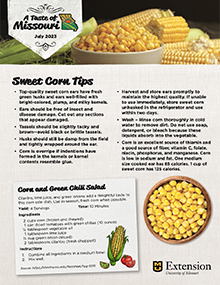
A Taste of Missouri — July — Sweet Corn
New $3.25
Easy-to-prepare recipes and tips for using sweet corn are displayed in this eight-page flier. Additional seasonal recipes, ingredients, tips, and safety measures are also included.

How to Can Pickled Products
Reviewed
Learn safe methods for canning pickled fruits and vegetables, including processing techniques and ingredient guidelines to prevent spoilage.
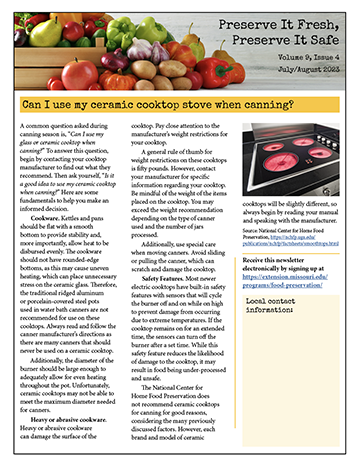
Preserve It Fresh, Preserve It Safe: 2023, No. 4 (July/August)
New
Learn about the possibility of using a ceramic cooktop when canning and how to make mango chutney.
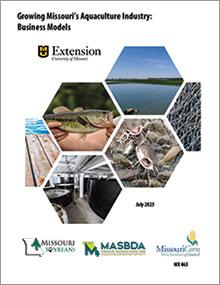
Growing Missouri’s Aquaculture Industry: Business Models
New
Learn about capital investments, production budgets, inputs and net returns for startup Missouri aquaculture operations using pond culture or recirculating aquaculture systems.
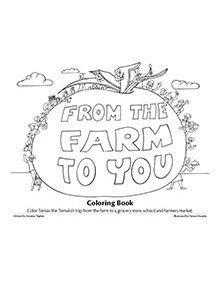
From the Farm to You Coloring Book
Reviewed
This 28-page coloring book follows Tomás the Tomato on a journey from farm to table, teaching young children about food origins and healthy eating.

Food Safety Tips for Consumers: Meal Delivery Services
New
It’s important to keep food safety in mind when receiving meal deliveries or getting groceries delivered. Foodborne illnesses can occur when food isn’t handled properly. Get tips for keeping food delivered to your home safe in this fact sheet.

Small Acreage Business Planning in Missouri
New
Learn why business planning around marketing, assets and profitability is important for launching a successful small acreage enterprise. Be sure to envision your goals as you consider enterprises.
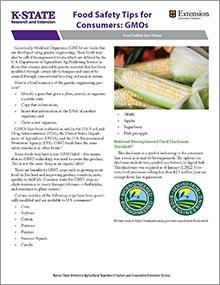
Food Safety Tips for Consumers: GMOs
New
Genetically modified organisms, or GMOs, are foods developed using genetic engineering. Learn some basic information about labeling requirements and food safety in this fact sheet.
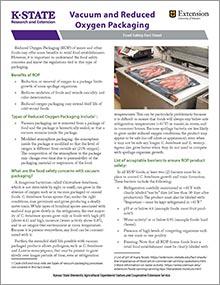
Vacuum and Reduced Oxygen Packaging
New
Reduced oxygen packaging of meats and food may offer some benefits, but you need to understand the food safety concerns and know the regulations tied to this type of packaging. Learn about these safety concerns and how to mitigate them in this fact sheet.
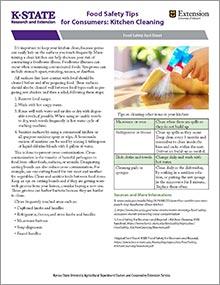
Food Safety Tips for Consumers: Kitchen Cleaning
New
It’s important to keep your kitchen clean, because germs can easily lurk on the surfaces you touch frequently. Maintaining a clean kitchen can help decrease your risk of contracting a foodborne illness. Get some kitchen cleaning tips.
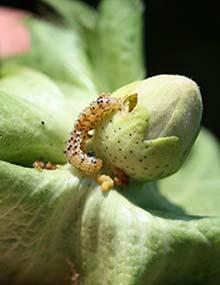
Technology-based Approaches to Managing Cotton Bollworm in Bt Cotton
New
The bollworm (Helicoverpa zea), also known as the corn earworm, is considered the most economically damaging caterpillar pest in Texas and Mid-southern U.S. cotton production.
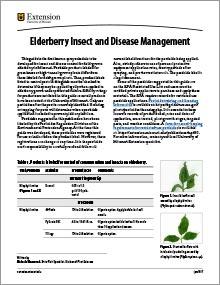
Elderberry Insect and Disease Management
Revised
This guide is the first known spray schedule to be developed for insect and disease control for field-grown elderberry in Missouri. Pesticide products labeled for greenhouse or high-tunnel-grown plants differ from those labeled for field-grown plants. Thus, product labels listed to control pests in this guide must be checked to determine if they may be applied legally when applied to elderberry grown under protected culture. Efficacy ratings for products are not listed in this guide as not all products have been tested at the University of Missouri.

Growing Missouri’s Aquaculture Industry: Trends and Outlook
New
Learn aquaculture production trends, demand for seafood, industry competition and feed industry trends that affect Missouri’s aquaculture industry.

Solutions for Better Living | Cooking Third Edition
Revised
Healthy cooking and eating is important to everyone’s health and wellbeing. This magazine covers various health and nutrition topics with an emphasis on healthy cooking. Topics include food safety, savvy shopping and cooking with kids. This magazine offers fun, colorful and easy-to-read stories, tips and tricks on stretching your food budget, selecting and preparing in-season fruits and vegetables, how to avoid foodborne illnesses and much more.
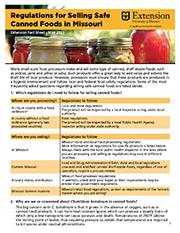
Regulations for Selling Safe Canned Foods in Missouri — Fact Sheet
Revised
Editor’s note
The following abstract describes a publication that is only available as a downloadable PDF.

Growing Missouri’s Aquaculture Industry: Needs Assessment
New
Survey based needs assessment of Missouri aquaculture producers identifies common Missouri aquaculture species, fish and pond stocking market use, and perceptions about the future of the aquaculture industry.
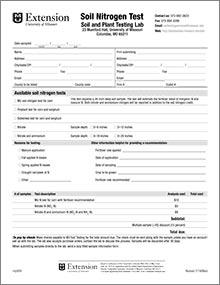
Soil Nitrogen Test Information Form
Revised
This testing focuses specifically on measuring nitrogen levels in soil samples for a variety of uses and functions. Complete and submit this form along with your samples.

Preserve It Fresh, Preserve It Safe: 2023, No. 3 (May/June)
New
Learn how to safely dry and store mushrooms at home to prevent foodborne illnesses. Follow best practices for dehydration, rehydration, and cooking.

Let's Read About Healthy Eating — Newsletter for Pre-kindergarten Curriculum Lesson 4: Choosing Fruits and Vegetables (Bundle of 25)
Reviewed $12
Editor's note
The following abstract describes a publication that is available for purchase or as a downloadable PDF.
If reprinting or copying, please complete the permissions form that can be found on the reprint and copy guidelines page. If sharing or posting, please link directly to this page.

Fun With Food and Fitness — Newsletter for First Grade Curriculum Lesson 4: Vegetables (Bundle of 25)
Reviewed $12
Editor's note
The following abstract describes a publication that is available for purchase or as a downloadable PDF.
If reprinting or copying, please complete the permissions form that can be found on the reprint and copy guidelines page. If sharing or posting, please link directly to this page.

Let's Read About Healthy Eating — Newsletter for Pre-kindergarten Curriculum Lesson 6: Protein (Bundle of 25)
Reviewed $12
Editor's note
The following abstract describes a publication that is available for purchase or as a downloadable PDF.
If reprinting or copying, please complete the permissions form that can be found on the reprint and copy guidelines page. If sharing or posting, please link directly to this page.

Building MyBody — Newsletter for Third Grade Curriculum Lesson 2: Carbohydrates (Bundle of 25)
Reviewed $12
Editor's note
The following abstract describes a publication that is available for purchase or as a downloadable PDF.
If reprinting or copying, please complete the permissions form that can be found on the reprint and copy guidelines page. If sharing or posting, please link directly to this page.